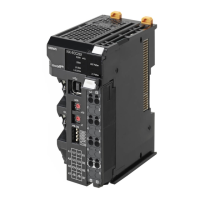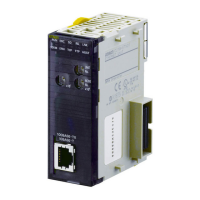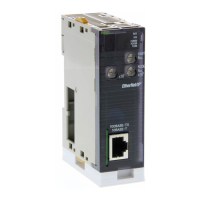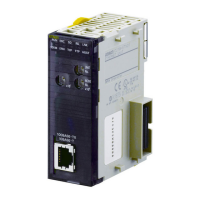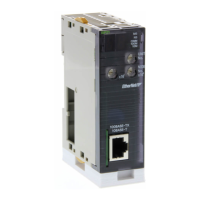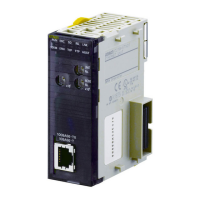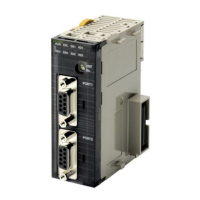34
DeviceNet Remote I/O Communications Section 3-2
3-2 DeviceNet Remote I/O Communications
This section describes how DRT2-slave data can be allocated for remote I/O
communications with the Master Unit.
3-2-1 Overview of Remote I/O Allocations for Smart Slaves
Unlike the DRT1-series Slaves, the DRT2-series Smart Slaves store data
internally. When necessary, the user can specify which data is allocated for
remote I/O communications with the Master Unit. (Allocation is not required,
however, for the default I/O data.)
• Data can be specified in either of the two ways described below.
Smart Slave I/O
Allocation Methods
Smart Slave data can be allocated to the Master Unit for remote I/O communi-
cations in any of the ways described below.
• Select a data pattern (fixed combi-
nation) using the Slave’s default
connection path setting.
• Select individual data as desired
using the Master’s connection set-
ting.
Either fixed allocation or user allocation is
possible.
Only possible with user allocation and if
the Master Unit is a CS/CJ-series
DeviceNet Unit.
A
C
B
Master
Smart Slave
Specify which
data is allocated
where.
Data is
stored
internally.
A
C
B
A
C
B
A
B
Master
Smart Slave
Select from
predetermined
data patterns.
Specified
data pattern
allocated.
A
C
B
A
C
Master
Smart Slave
Select the
required
data.
Specified data
allocated.
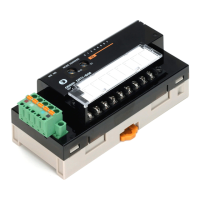
